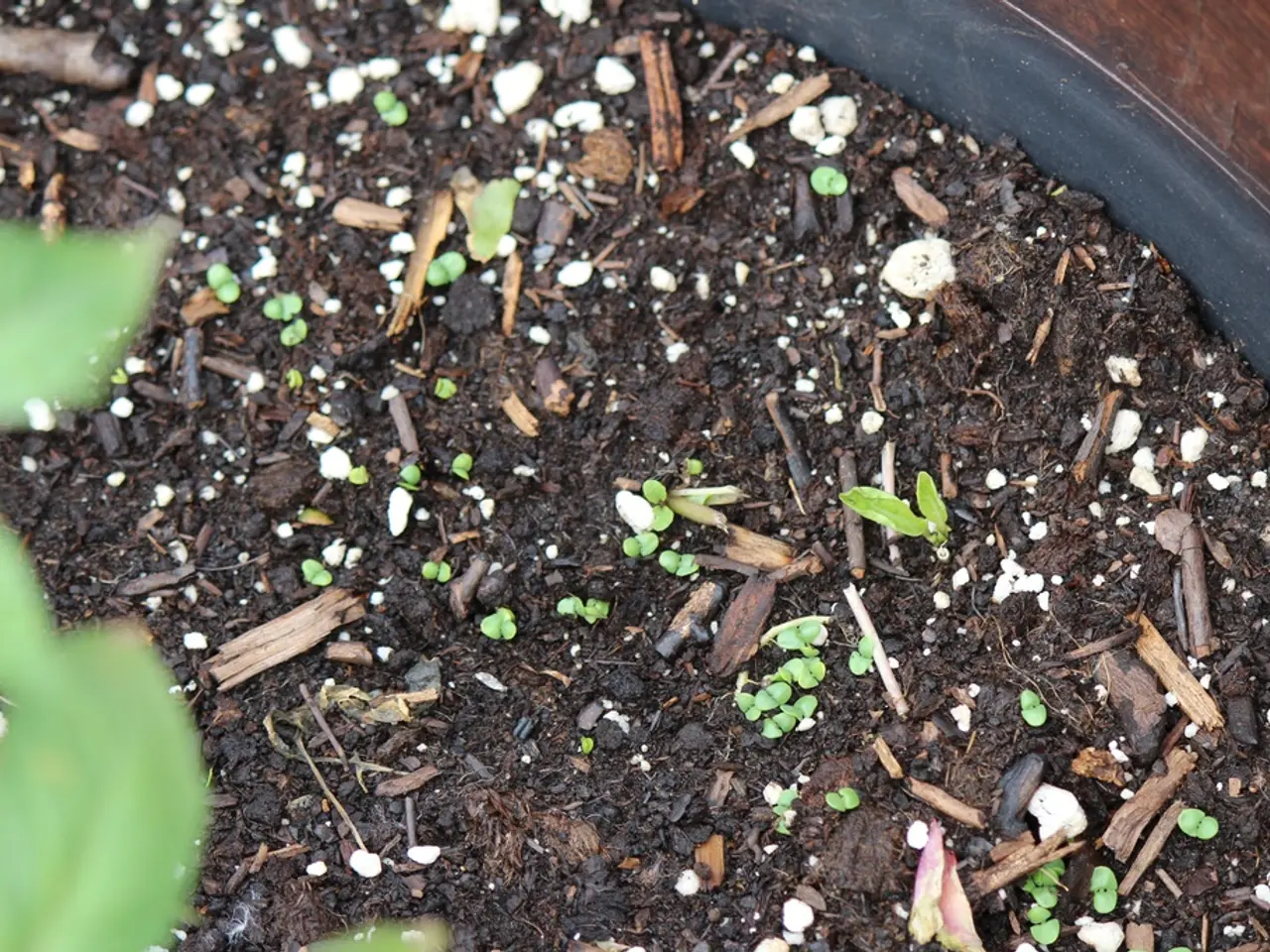Essential Techniques for Understanding Soil Health and Soil Analysis
==============================================================================
October 21, 2024
In the pursuit of sustainable agriculture and thriving plant growth, understanding soil health is paramount. Here, we delve into the top 10 methods for soil health assessment and testing.
Soil Testing Methods
- pH Testing: Measuring soil acidity and alkalinity is crucial for plant growth. pH meters and soil test kits are commonly used for this purpose.
- Electrical Conductivity (EC) Test: This test is used to evaluate soil salinity, which can impact plant growth and water absorption.
- Soil Trim Test: This method helps determine the proportions of sand, silt, and clay on the soil surface.
- Soil Moisture Sensors: Electrical devices that measure the moisture content of soil can provide valuable insights into soil moisture levels.
- Nutrient Analysis: Determining the presence of macronutrients (such as potassium, phosphorus, and nitrogen) and micronutrients (like zinc, copper, and manganese) is essential for maintaining a balanced soil ecosystem.
- Microbial Biomass Tests: These tests determine the mass of microorganisms present in the soil, offering insights into the soil's microbial activity.
- Soil Respiration Tests: By measuring carbon dioxide levels, these tests provide insights into the activity of soil microorganisms.
- Particle Size Analysis: This method is used by soil laboratories to assess the composition of soil, including sand, silt, and clay.
- Soil Organic Carbon (SOC) Testing: This method assesses the organic matter content in soil, which is vital for soil fertility and nutrient cycling.
- Cation Exchange Capacity (CEC) Test: This test measures a soil's capacity to hold and exchange nutrients, with high CEC soils storing more nutrients and benefiting plant growth.
Best Practices for Soil Sampling
Accurate soil testing heavily depends on careful, systematic sampling. The best practices for soil sampling in agriculture include:
- Sampling multiple locations and depths within the field to get a representative soil profile.
- Dividing the field into uniform zones or grids based on soil type, topography, and crop history.
- Taking multiple cores per sampling unit and mixing them thoroughly.
- Using clean, non-contaminating sampling tools.
- Avoiding sampling when soil is too wet.
- Collecting samples several months before planting.
- Labeling samples clearly and shipping promptly to accredited labs.
- Using results to guide precise, site-specific management decisions.
Integration with digital tools such as GPS-guided sampling, IoT sensors, and data platforms can further optimize sampling accuracy and interpretation.
Healthy soil is the foundation of sustainable agriculture, supporting plant growth, water retention, and nutrient cycling. Regular soil testing helps farmers and gardeners make informed decisions regarding nutrient management, water usage, and soil amendments, ultimately leading to sustainable and profitable farming.
References: [1][2][3][4][5]
[1] Best Practices for Soil Sampling in Agriculture. (n.d.). Retrieved from [link to source] [2] Soil Testing Basics. (n.d.). Retrieved from [link to source] [3] Soil Testing for Sustainable Agriculture. (n.d.). Retrieved from [link to source] [4] Field Sampling for Soil Testing. (n.d.). Retrieved from [link to source] [5] Soil Testing: A Practical Guide. (n.d.). Retrieved from [link to source]
Maintaining a sustainable way of life includes embracing practices such as efficient water management in home-and-garden settings, which can be achievable through the use of rain barrels and drip irrigation systems for gardening.
The understanding of sustainable agriculture extends beyond soil health assessment and testing, encompassing waste management strategies that minimize pollution and conserve resources, ultimately benefiting our environment and lifestyle.




